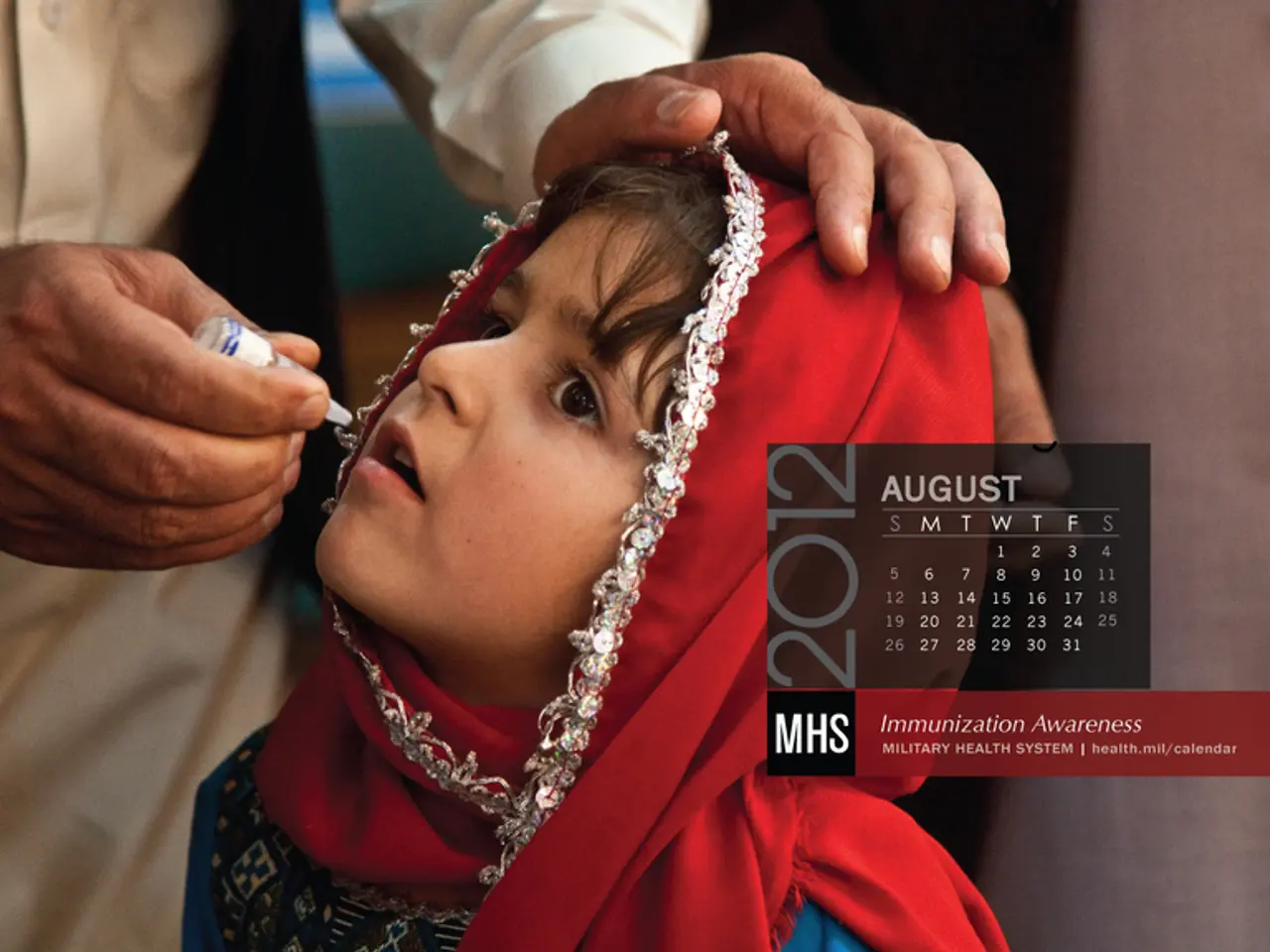Vaccination Rate Drop-Off Could Revive Previous Ailments: Importance of Continued Immunization
**Headline:** The Resurgence of Previously Eliminated Diseases: A Consequence of Declining Vaccination Rates
In recent years, the United States has witnessed a concerning trend - a decline in childhood vaccination rates. This downward trend, particularly for the MMR (measles, mumps, and rubella) vaccine, has led to the resurgence of once eradicated diseases, such as measles.
**Measles Outbreaks**
The current measles outbreak in the U.S., reportedly the largest in three decades, has seen over 1,000 cases across 30 states as of mid-2025[1][2]. This surge in cases reflects the broader trend of declining childhood vaccination rates.
**Loss of Herd Immunity**
When vaccination rates fall below the threshold of 95%, herd immunity is compromised, leaving communities vulnerable to outbreaks[1][3]. In the case of measles, a continuous high level of vaccination is essential to prevent its spread.
**Increased Risk of Outbreaks**
Pockets of unvaccinated individuals in local communities can lead to outbreaks, as seen in the 2025 measles outbreak[3]. The CDC has noted that outbreaks often occur in close-knit communities with low vaccination rates[2].
**Public Health Challenges**
Lower vaccination rates necessitate targeted public health interventions to address pockets of low immunity[1]. This includes educating communities about vaccine safety and effectiveness.
**Economic and Social Impact**
Outbreaks can lead to significant economic and social costs due to hospitalizations, lost productivity, and the need for public health responses[1][2].
**Measures to Address Declining Vaccination Rates**
To combat this trend, several measures have been proposed. These include enhancing public understanding of vaccine benefits and addressing misinformation, focusing on areas with low vaccination rates, and ensuring easy access to vaccines.
**Vulnerable Populations**
It's important to note that certain groups, such as immunocompromised individuals, newborns, the elderly, and pregnant women, are more susceptible to severe illness from diseases. For instance, pregnant individuals cannot receive the MMR vaccine due to containing live virus. Rubella during pregnancy can increase the risk of miscarriage, stillbirth, and congenital rubella syndrome, which can cause numerous birth defects including heart problems, brain damage, deafness, and lung, liver, eye, and thyroid ailments.
The entire concept of population immunity depends on all of us doing our part to keep diseases at bay, protecting ourselves and others, especially the vulnerable. Therefore, it's crucial for everyone to speak with their primary care provider to verify that they are up to date on recommended vaccines, including booster doses if eligible.
[1] Centers for Disease Control and Prevention (CDC). (2025). Measles. Retrieved from https://www.cdc.gov/measles/index.html [2] World Health Organization (WHO). (2025). Measles. Retrieved from https://www.who.int/health-topics/measles#tab=tab_1 [3] National Institutes of Health (NIH). (2025). Herd Immunity. Retrieved from https://www.nih.gov/health-information/immune-system/herd-immunity
- As the trend of declining vaccination rates continues, there's a growing concern about the revival of eradicated diseases like measles.
- Sciencially, the resurgence of once eradicated diseases like measles is a direct consequence of low vaccination rates.
- The 2025 measles outbreak, the largest in three decades, has resulted in over 1,000 cases across 30 states.
- When vaccination rates drop below 95%, herd immunity weakens, leaving communities susceptible to outbreaks.
- In the case of measles, a consistent high level of vaccination is vital to prevent its spread.
- Local pockets of unvaccinated individuals can initiate outbreaks, as seen during the 2025 measles outbreak.
- Public health measures are needed to tackle pockets of low immunity, involving community education about vaccine safety and effectiveness.
- Economic and social costs can escalate due to hospitalizations, lost productivity, and necessary public health responses during outbreaks.
- To mitigate this trend, proposed measures include enhancing understanding of vaccine benefits, targeting areas with low vaccination rates, and facilitating easy vaccine access.
- Immunocompromised individuals, newborns, the elderly, and pregnant women are particularly vulnerable to severe illness from diseases, such as congenital rubella syndrome, which can lead to various birth defects.
- Pregnant women cannot receive the MMR vaccine due to its live virus content.
- Everyone should consult their primary care provider to ensure they are up-to-date on recommended vaccines, including booster doses if eligible.
- In addition to vaccines, prioritizing health and wellness through fitness and exercise, mental health, eye health, digestive health, skin care, and more is essential for overall well-being.
- Aging, women's health, men's health, parenting, weight management, cardiovascular health, neurological disorders, skin conditions, hearing, and cbd are aspects of health that require our attention and care.




